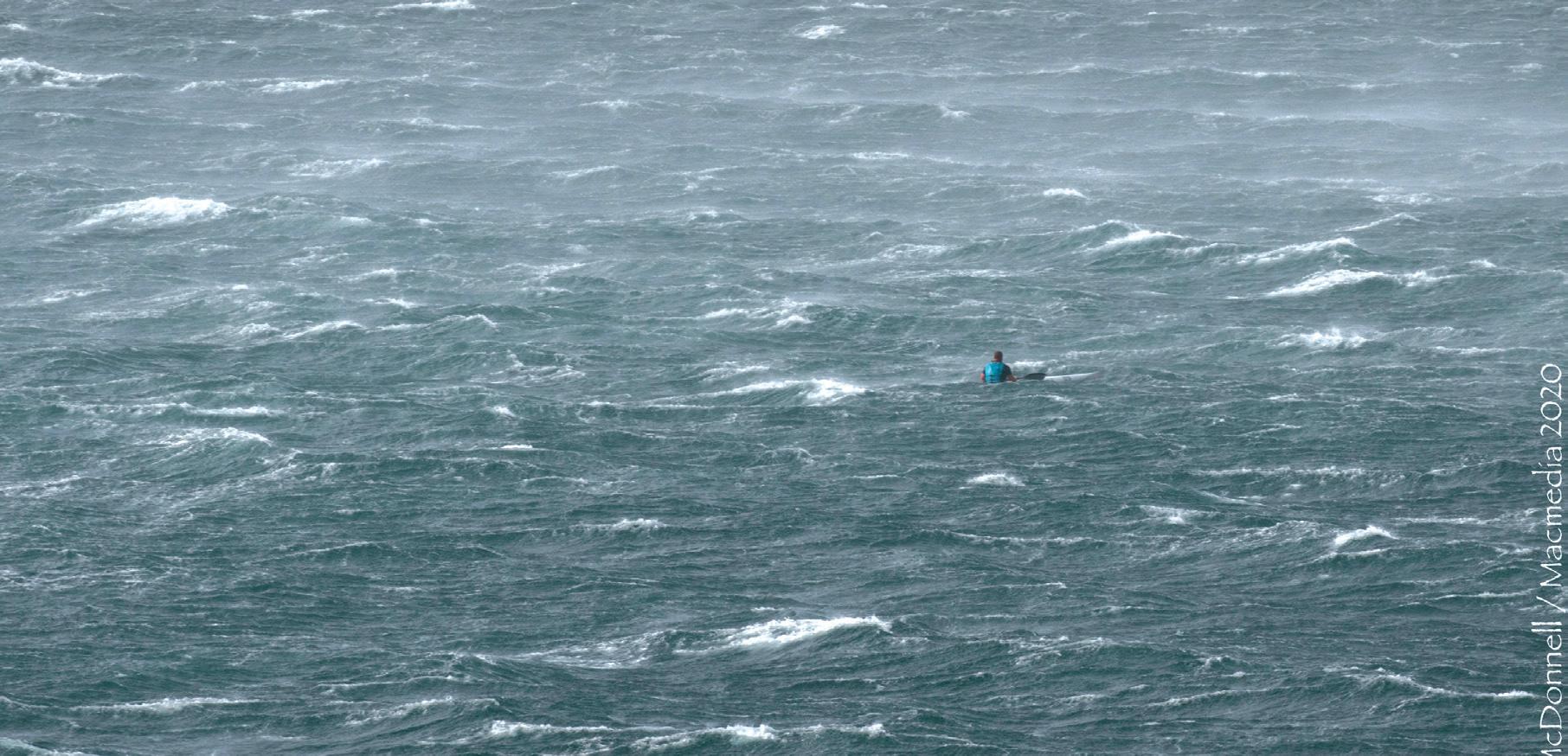
3 minute read
THE SEA HAD OTHER PLANS
When a paddler doing the Reverse Miller’s Run was thrown off course by a sudden change in wind conditions, SafeTRX and a quick NSRI response saved the day. THE SEA Rob Mousley recounts the events of that 9 July morning. HAD OTHER PLANS
WHEN THE NSRI reached Duncan MacDonald’s position, he was approximately 6km off Smitswinkel Bay, rapidly drifting further offshore on his surfski. Gale-force squalls whipped sheets of spray off the waves, reducing visibility almost to nothing. Would they be able to spot the surfski in the maelstrom of waves and spray?
When Duncan and two friends had set off to do the Reverse Miller’s Run, the northwesterly wind had been a relatively moderate 15 knots, gusting to 25 knots – ideal conditions to see the paddlers surfing wave after wave from Fish Hoek to Miller’s Point in False Bay, Cape Town.
But as they passed Roman Rock Lighthouse, approximately halfway, the wind strength increased dramatically.
A sudden wind change turned the sea into a frothy mass of swells during the Reverse Miller’s Run paddle.
Rain and spray whipped up by the squalls blotted out the coastline.
Unbeknownst to them, the wind direction had changed too, and although the paddlers thought they were on a direct line to the finish, they were actually heading further and further out to sea. It was only when the gloom lifted momentarily that they realised just how far offshore they were.
Duncan, the least experienced of the three surfskiers, had fallen behind and could not see his friends ahead of him when they abruptly turned

A little while later, he looked at his GPS and saw that he’d covered 11km, which meant that he’d already overshot the finish. As he attempted to turn towards shore, he entered a notorious area known to locals as Hurricane Alley. Now the squalls were coming at him more frequently and violently. Every time one hit, it spun him round, the gusts so strong he was barely able to hold onto his paddle, let alone use it.
The coastline curves southwest after Miller’s Point. Not only was Duncan being blown offshore, but the shore was receding too. He wasn’t making any progress and the weather was worsening. The odds that he’d be able to make his way into Smitswinkel Bay were non-existent.
It was time to call for help. Like many paddlers, Duncan was running the SafeTRX tracking application. Sticking his legs out on either side of the surfski to aid stability, he grabbed his cellphone in its waterproof pouch, opened the app and tapped the “Call for Help” button. Moments later he was talking to the NSRI’s Emergency Operations Centre, and the crew at Station 10 (Simon’s Town) were activated.

The station’s two NSRI craft, Spirit of Surfski II and Spirit of Safmarine, launched and raced south to find him. ‘SafeTRX was critical in this rescue,’ said Darren Zimmerman, station commander of the Simon’s Town base. ‘It really does take the “search” out of “search and rescue”!’
But it wasn’t quite that simple. Although SafeTRX had guided the rescue boats to Duncan’s vicinity, the near white-out of the gale meant that the crew battled to spot the surfski in the huge breaking waves. So it was Duncan who spotted them before they could see him.
‘When I saw them going past about 400m away, I really became concerned,’ he said. ‘What if they couldn’t find me?’
Duncan’s cellphone came to the rescue once more, this time enabling him to speak directly to the crew and guide them to his position. Soon he was picked up by the RIB and transferred to the larger Spirit of Safmarine.
Twenty minutes later, on the way back to the NSRI base, his cellphone battery died. It had been a very close call.
‘Huge thanks to the NSRI for their incredible professionalism and compassion,’ Duncan said afterwards. ‘And thanks to SafeTRX! Next time, I’ll be carrying some extra safety gear, like flares and a VHF radio.’








